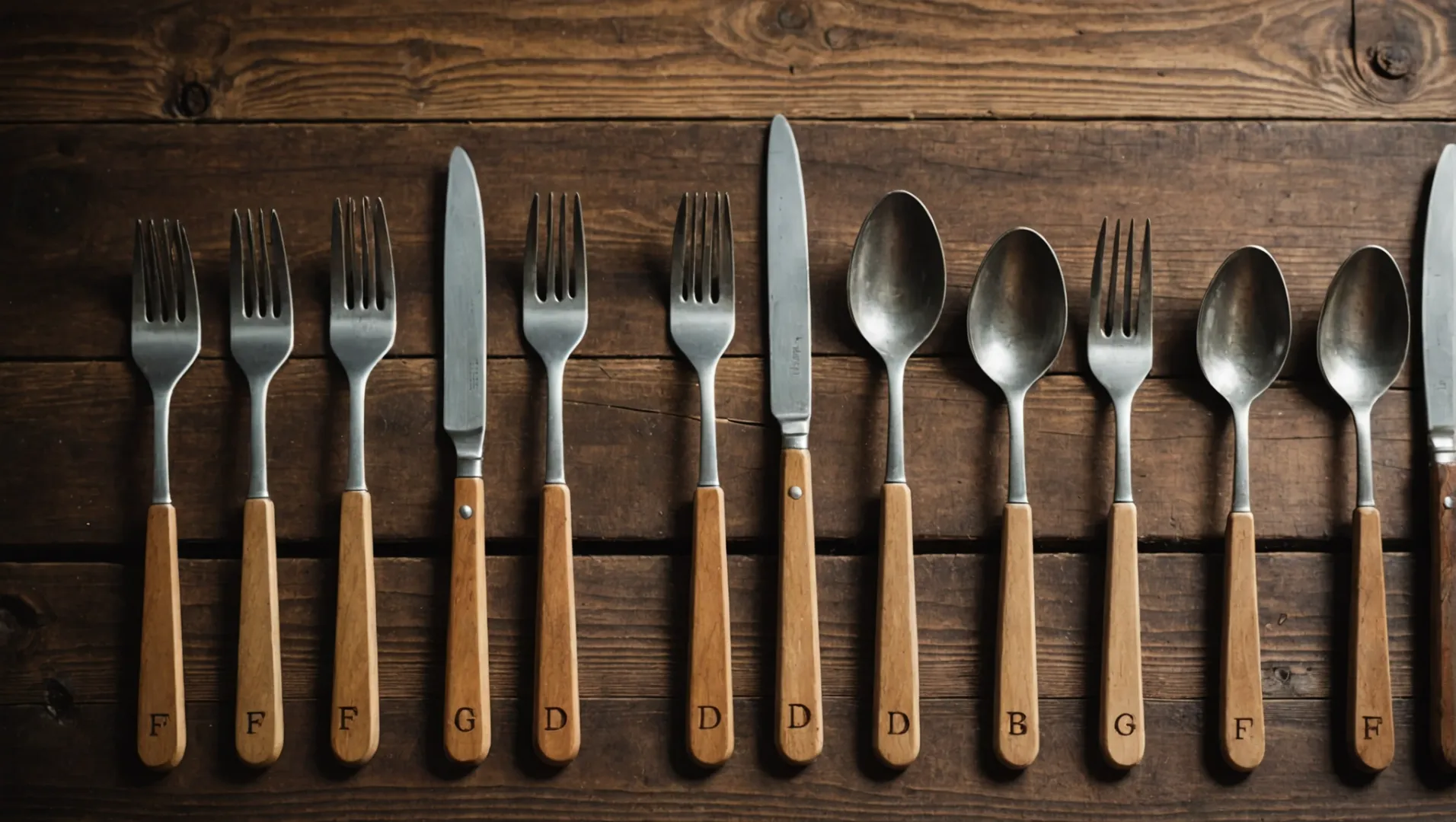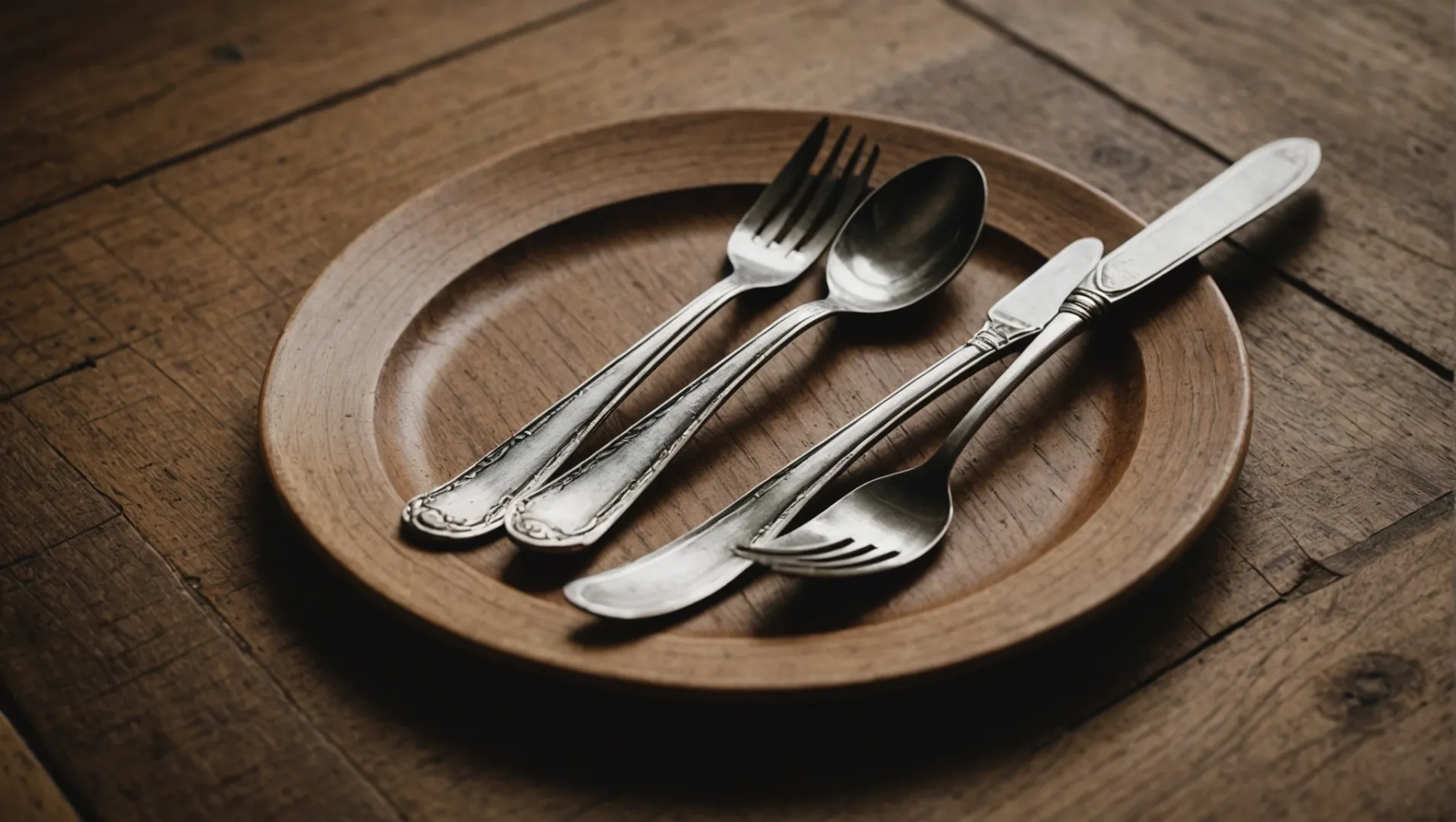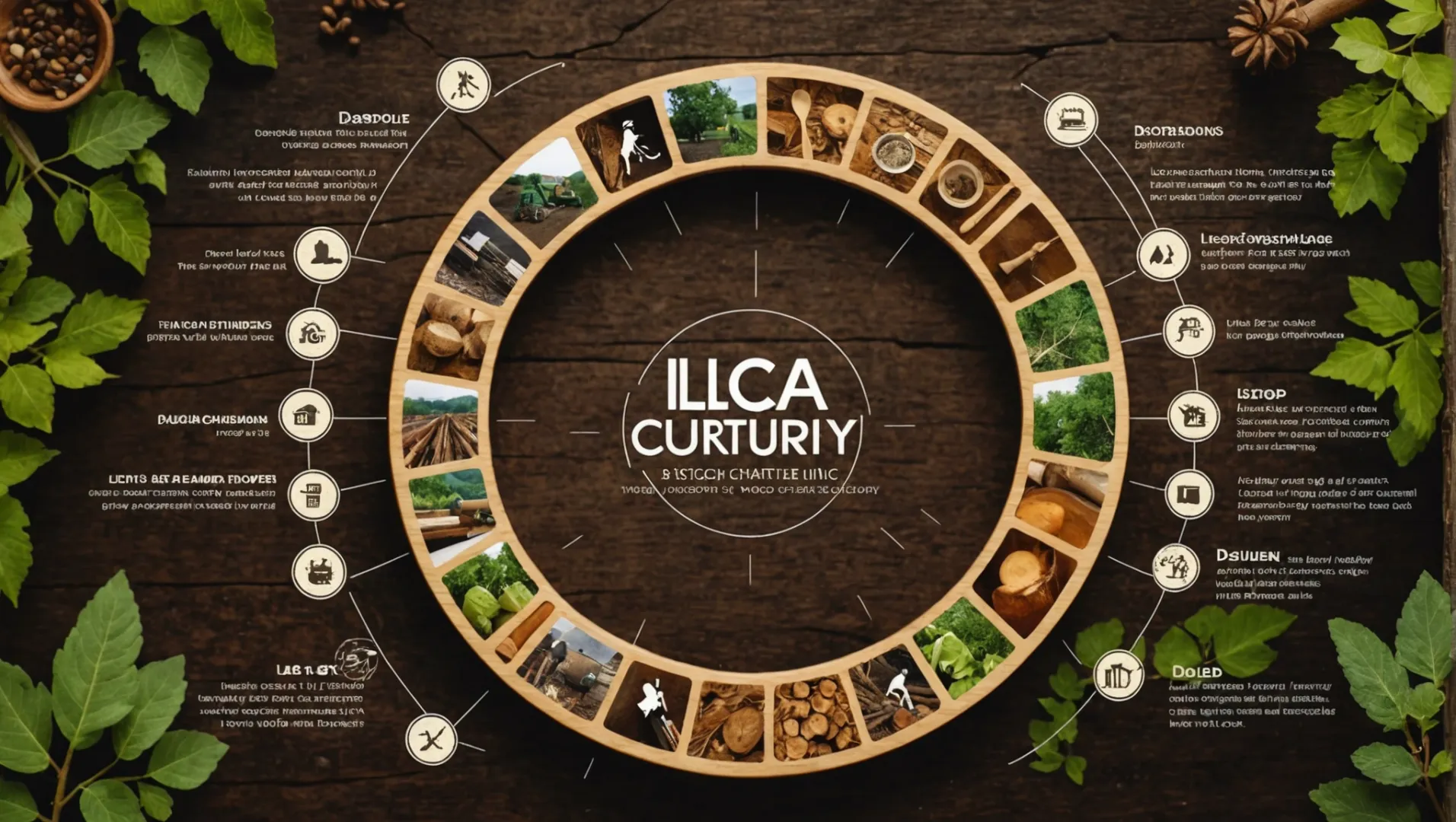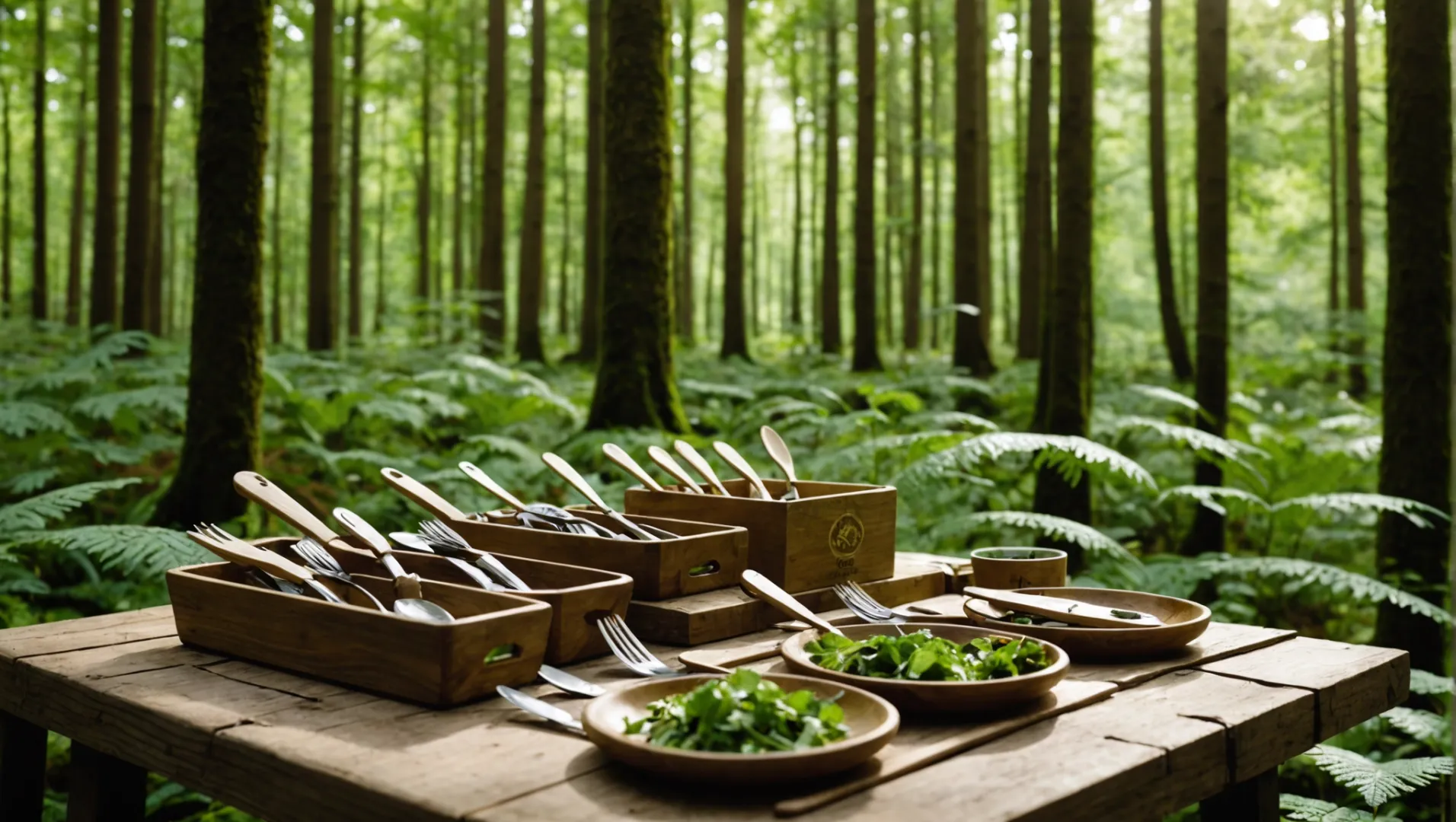
In an era where sustainability meets practicality, wooden cutlery has become a popular choice for eco-conscious consumers.
Wooden cutlery can be certified by eco-labels such as the FDA (Food and Drug Administration) and LFGB (Lebensmittel-, Bedarfsgegenstände- und Futtermittelgesetzbuch) for safety in food contact, while FSC (Forest Stewardship Council) certification ensures sustainable sourcing.
While FDA and LFGB certifications focus on food safety, understanding other eco-certifications like FSC and LCA provides a comprehensive view of the environmental and ethical standards governing wooden cutlery. This insight is invaluable for anyone looking to make informed decisions about their purchasing or manufacturing practices.
FSC certification ensures sustainable sourcing of wooden cutlery.True
FSC certification verifies that wood is sourced from responsibly managed forests.
How Do FDA and LFGB Certifications Ensure Food Safety?
FDA and LFGB certifications are crucial for ensuring that wooden cutlery is safe for food contact, providing assurance to consumers and manufacturers alike.
FDA and LFGB certifications guarantee that wooden cutlery meets stringent safety standards, preventing harmful chemicals from contaminating food. These certifications involve rigorous testing of materials to ensure they are non-toxic and suitable for direct contact with food.

Understanding FDA Certification
The Food and Drug Administration (FDA)1 is a regulatory agency in the United States responsible for ensuring that products meet safety standards before they reach consumers. For wooden cutlery, FDA certification involves a comprehensive evaluation to ensure that the materials used do not release harmful substances when in contact with food. This includes testing for potential contaminants such as heavy metals or chemical residues that could pose health risks.
What is LFGB Certification?
In Germany, the Lebensmittel-, Bedarfsgegenstände- und Futtermittelgesetzbuch (LFGB) provides a similar certification standard to the FDA but is focused on the European market. LFGB certification involves rigorous testing under the German Food and Feed Code, ensuring that products are free from toxic substances and are safe for human consumption. This certification is particularly important for manufacturers looking to enter the European market, as it aligns with EU regulations.
Key Differences Between FDA and LFGB
While both certifications aim to ensure safety in food contact, they differ in specific testing methods and regulatory requirements. Here is a comparison:
| Feature | FDA Certification | LFGB Certification |
|---|---|---|
| Testing Scope | Focuses on general safety standards | Includes specific migration tests for foods |
| Market Focus | Primarily U.S. market | Primarily European market |
| Regulatory Body | U.S. Food and Drug Administration | German Federal Institute for Risk Assessment |
Why These Certifications Matter
FDA and LFGB certifications are essential for manufacturers aiming to assure consumers of their products' safety. With increasing global concerns about food safety, having these certifications not only helps build consumer trust but also enhances brand reputation. They serve as a mark of quality and reliability, distinguishing certified products in a competitive market.
Moreover, these certifications play a vital role in facilitating international trade by aligning products with recognized safety standards across different regions. This can help companies expand their market reach and gain a foothold in regions with stringent regulatory environments.
FDA certification is only for the U.S. market.True
FDA focuses on products intended for the U.S. market.
LFGB certification involves specific migration tests.True
LFGB includes tests to ensure no harmful migration into food.
What Role Does FSC Certification Play in Sustainability?
Explore how FSC certification impacts sustainable practices in the forestry industry and beyond.
FSC certification ensures that wood products are sourced sustainably, promoting responsible forest management, preserving ecosystems, and supporting local communities.

Understanding FSC Certification
The Forest Stewardship Council2 (FSC) certification plays a pivotal role in promoting sustainability by ensuring that products like wooden cutlery are sourced from responsibly managed forests. This certification is not just a label; it's a commitment to environmental responsibility, social equity, and economic viability.
FSC certification covers several critical aspects, including:
- Environmental Impact: Ensuring that forestry practices maintain ecological balance, protect wildlife habitats, and preserve biodiversity.
- Social Responsibility: Promoting fair labor practices and respecting the rights of indigenous peoples and local communities.
- Economic Viability: Supporting sustainable forest economies by ensuring fair pricing and demand for certified products.
Benefits of FSC Certification
The benefits of obtaining FSC certification extend far beyond meeting regulatory requirements. For companies involved in producing or selling wooden cutlery, FSC certification can:
- Enhance market credibility and consumer trust.
- Open access to environmentally conscious markets where consumers prefer sustainably sourced products.
- Fulfill corporate social responsibility (CSR) goals by aligning with global sustainability standards.
The FSC Certification Process
To obtain FSC certification, companies must undergo a rigorous assessment process that evaluates their forestry management practices against FSC's ten principles and criteria. This includes:
- Forest Management Audits: Independent audits are conducted to ensure compliance with environmental and social standards.
- Chain of Custody Certification: Ensures that products are traceable from the forest to the final consumer, maintaining transparency in the supply chain.
Challenges and Criticisms
While FSC certification is widely respected, it is not without challenges. Critics point out issues like inconsistent enforcement across regions and the potential for greenwashing. However, ongoing improvements in auditing practices and increased stakeholder engagement continue to address these concerns.
For further exploration of how FSC certification influences global sustainability efforts, consider examining case studies on successful implementations or researching how evolving policies impact FSC standards3.
FSC certification ensures fair labor practices.True
FSC promotes social responsibility by respecting workers' rights.
FSC certification guarantees higher product prices.False
FSC supports fair pricing, not necessarily higher prices.
Why is Life Cycle Analysis Important for Wooden Cutlery?
Understanding the importance of Life Cycle Analysis (LCA) can transform how we perceive wooden cutlery's environmental impact.
Life Cycle Analysis evaluates the environmental impacts of wooden cutlery from raw material extraction to disposal, promoting sustainable practices.

Understanding Life Cycle Analysis
Life Cycle Analysis (LCA) is a comprehensive method used to assess the environmental impacts associated with all the stages of a product's life. For wooden cutlery, this means evaluating everything from the harvesting of trees to manufacturing, distribution, usage, and eventual disposal. By analyzing each step, LCA provides valuable insights into energy consumption, emissions, and waste generation.
Benefits of Applying LCA to Wooden Cutlery
- Resource Efficiency: LCA helps manufacturers identify areas where resources can be conserved. For example, optimizing manufacturing processes can reduce waste and energy consumption.
- Environmental Impact Reduction: By understanding the entire life cycle, companies can implement strategies to minimize negative environmental effects.
- Improved Credibility and Transparency: As consumers become more environmentally conscious, transparent reporting through LCA can enhance brand credibility.
Competitive Advantage through LCA
In markets like North America and Europe, where regulations on single-use plastics are tightening, wooden cutlery evaluated through LCA can offer a competitive edge4. Companies that demonstrate their commitment to sustainability through LCA are likely to appeal more to eco-conscious consumers.
Real-world Examples
- Manufacturing Innovations: Some companies have re-engineered their production processes to achieve a lower carbon footprint, directly informed by their LCA findings.
- Consumer Education: Brands often use LCA data to educate consumers about the benefits of choosing wooden cutlery over plastic alternatives.
In conclusion, while other certifications5 ensure safety and sourcing standards, LCA provides a holistic view of the environmental impacts, empowering manufacturers and consumers alike to make informed, sustainable choices.
LCA evaluates wooden cutlery from tree harvesting to disposal.True
Life Cycle Analysis covers all stages of a product's life cycle.
LCA ignores energy consumption in wooden cutlery production.False
LCA assesses energy consumption at every stage of the product's life.
How Can Manufacturers Gain a Competitive Edge with Eco-Certifications?
In the ever-evolving market landscape, eco-certifications are transforming how manufacturers distinguish themselves.
Manufacturers gain a competitive edge with eco-certifications by building trust, accessing new markets, and adhering to stringent environmental standards.

Building Trust with Consumers
Eco-certifications serve as a testament to a manufacturer's commitment6 to sustainable practices. Certifications like FSC ensure that wooden cutlery is sourced from responsibly managed forests, while others like FDA and LFGB focus on safety in food contact. By displaying these certifications, manufacturers reassure consumers about the safety and sustainability of their products, fostering trust and loyalty.
Accessing New Markets
Global markets are increasingly favoring products with eco-certifications. In regions such as North America and Europe, stringent regulations on single-use plastics are opening opportunities for certified wooden cutlery. Eco-certifications act as a passport to these markets, allowing manufacturers to tap into a consumer base that's both environmentally conscious and willing to pay a premium for certified products.
Meeting Regulatory Requirements
Governments worldwide are implementing stricter environmental regulations. Eco-certifications can ease compliance by ensuring that products meet international standards for sustainability and safety. For instance, LCA provides measurable data on resource use and environmental impact, which can help companies meet governmental sustainability targets and reduce liability risks.
Enhancing Brand Image and Reputation
A strong brand image is crucial for long-term success. Eco-certifications enhance a company's reputation by showcasing its dedication to ethical and sustainable practices. This not only differentiates a brand from its competitors but also attracts partnerships with other eco-conscious businesses and organizations.
| Certification | Focus | Benefits |
|---|---|---|
| FDA | Food safety | Consumer trust |
| LFGB | Food safety | Market access |
| FSC | Sustainable sourcing | New markets |
| LCA | Resource efficiency | Regulatory compliance |
Leveraging Eco-Certifications in Marketing
Marketing strategies can be significantly bolstered by the inclusion of eco-certifications. Highlighting these certifications in advertising campaigns, product packaging, and company websites draws attention to a manufacturer's commitment to sustainability. This not only increases brand visibility but also aligns the brand with the values of modern, eco-conscious consumers.
Eco-certifications build consumer trust.True
Eco-certifications reassure consumers about product safety and sustainability.
LCA focuses on market access benefits.False
LCA assesses environmental impact, not market access.
Conclusion
Eco-certifications like FDA, LFGB, and FSC are crucial for ensuring wooden cutlery's safety and sustainability. Prioritizing these standards empowers manufacturers and consumers to make informed, eco-friendly choices.
-
Learn how FDA certification ensures safety in food contact.: Importers must apply for a pre-import approval on the USDA website, prior to importing certain wooden handicrafts, which may also include wooden ... ↩
-
Understand FSC's mission in promoting sustainable forest management.: The Forest Stewardship Council (FSC) sets the world's most rigorous standards for sustainable forest management. ↩
-
Learn about policy impacts on FSC certification.: The FSC Policy and Standards Committee takes final decisions on FSC requirements based on regular processes and Forest Stewardship Standards upon conducting ... ↩
-
Learn how LCA can differentiate brands in eco-friendly markets.: In today's market, sustainability is a key driver of competitive advantage. By leveraging Life Cycle Assessments (LCAs), businesses can meet ... ↩
-
Explore more about essential certifications beyond LCA for wooden cutlery.: Plant based compostable cutlery made from CPLA or natural Birch wood. Compostable cutlery is certified by BPI® (Biodegradable Products Institute) for commercial ... ↩
-
Learn how eco-certifications foster consumer confidence and loyalty.: Leveraging certification can break through a cluttered marketplace by providing recognizable and validated accountability to consumers, ... ↩

